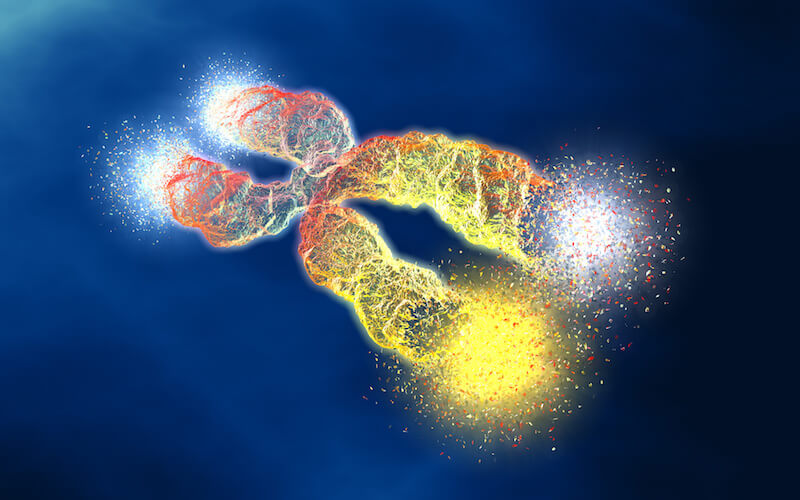Introduction:
Throughout history, humans have sought ways to slow down or even reverse the process of aging. The quest for eternal youth has been a subject of fascination and desire for countless generations. While the fountain of youth remains a mythical concept, modern science has made significant strides in understanding the biological processes of aging. In this article, we delve into the science behind aging, explore the factors that contribute to the process, and examine the latest advancements in the field.
The Complexity of Aging:
Aging is a complex and multifaceted process that affects all living organisms. It involves the gradual deterioration of cellular and molecular structures, leading to a decline in physiological function and an increased vulnerability to disease. Scientists have long been intrigued by the mechanisms that drive aging, and research in this area has expanded exponentially in recent decades.
Cellular Senescence and Telomeres:
One of the key players in aging is cellular senescence. Over time, cells in our body reach a point where they lose their ability to divide and replicate. This phenomenon is known as replicative senescence. One factor contributing to replicative senescence is the shortening of telomeres—the protective caps at the ends of our chromosomes. Telomeres naturally shorten with each cell division until they become critically short, triggering cellular senescence.
The Role of DNA Damage and Oxidative Stress:
Another significant contributor to aging is DNA damage. Our DNA is constantly subjected to both internal and external factors that can cause mutations and impair its function. These factors include environmental toxins, radiation, and normal metabolic processes. To counteract this, our cells possess DNA repair mechanisms. However, as we age, these repair mechanisms become less efficient, leading to an accumulation of DNA damage and an increased risk of age-related diseases.
Furthermore, oxidative stress, an imbalance between the production of harmful free radicals and the body’s ability to neutralize them, is closely linked to aging. Free radicals can damage cellular structures, including proteins, lipids, and DNA, accelerating the aging process. Antioxidants play a crucial role in minimizing the damage caused by free radicals and are found in many fruits and vegetables.
The Role of Telomerase and Genetic Factors:
Telomerase, an enzyme that helps replenish telomeres, has emerged as a potential target for anti-aging interventions. In certain cells, such as stem cells and germ cells, telomerase remains active, allowing these cells to divide indefinitely. Researchers are exploring ways to reactivate telomerase in other cells to potentially reverse cellular senescence. However, manipulating telomerase is a delicate process, as its overexpression is associated with an increased risk of cancer.

Genetic factors also play a significant role in the aging process. Longevity runs in families, suggesting that genetic variations contribute to a person’s lifespan. Studies have identified several genes that influence aging, including those involved in DNA repair, cellular senescence, and oxidative stress response. Understanding these genetic factors can help uncover potential targets for interventions to slow down aging.
Lifestyle Factors and Aging:
While genetics and biological processes contribute to aging, lifestyle factors also have a profound impact. A healthy lifestyle, including a balanced diet, regular exercise, stress management, and adequate sleep, can significantly slow down the aging process. Proper nutrition ensures that our cells receive essential nutrients, while exercise improves cardiovascular health, strengthens muscles, and maintains cognitive function. Effective stress management and quality sleep promote overall well-being and reduce the impact of oxidative stress on our bodies.
Emerging Anti-Aging Interventions:
Scientists and researchers are actively exploring various anti-aging interventions, aiming to delay the onset of age-related diseases and extend healthy lifespan. These interventions include caloric restriction, which has shown promising results in extending lifespan in various organisms. Additionally, senolytic drugs that selectively eliminate senescent cells are being investigated to improve tissue function and delay age-related conditions.
Furthermore, ongoing research in the field of regenerative medicine holds tremendous potential for reversing the effects of aging. Stem cell therapies, tissue engineering, and organ transplantation may eventually allow us to repair or replace damaged tissues and organs, restoring youthful function.
Conclusion:
While the fountain of youth remains a mythical concept, the science of aging has come a long way in unraveling the mysteries behind this complex process. From cellular senescence and telomeres to DNA damage and lifestyle factors, a comprehensive understanding of aging is gradually being achieved. The ongoing research and advancements in this field bring hope for developing interventions that can delay the onset of age-related diseases and enhance the quality of life in our later years. By combining scientific knowledge with healthy lifestyle choices, we can optimize our chances of living longer, healthier lives, and perhaps come closer to the elusive fountain of youth.

